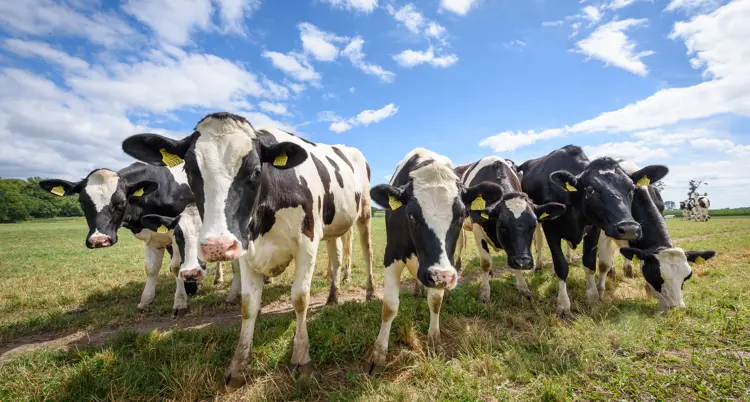Lameness: A Pain for cows and farmers
Lameness is a significant issue affecting dairy farms worldwide, not only compromising the health and well-being of cows but also leading to considerable financial losses for farmers. As temperatures rise and environmental conditions change with the approach of summer, the risk of lameness increases, making hoof care a top priority. Proactively addressing lameness and implementing preventative measures can help reduce its impact, ensuring healthier cows and sustained farm productivity.

This article will briefly look into the various effects that lameness can have on a dairy herd, including its impact on cow health, milk production, fertility, and overall farm productivity. The major focus will be prevention; we will delve into an in-depth range of preventative strategies and practical solutions that farmers can implement to minimize these issues and promote better hoof health and herd welfare.
Understanding the impact of lameness:
Lameness in dairy cows is a clinical symptom, recognized by an altered gait, usually associated with painful hoof lesions. The primary consequence of lameness is a decline in milk production. Cows experiencing hoof pain change their eating habits, reducing both the time spent feeding and the frequency of eating. Although some cows might initially compensate by consuming feed more quickly, severe lameness ultimately limits their feed intake, affecting milk production.
The ripple effect of lameness:
• Fertility challenges: Fertility is arguably one of the top profit drivers in dairy farming. Lameness can disrupt a cow’s estrus cycles, decrease fertility, and increase the likelihood of pregnancy loss. This can be attributed to loss in body condition, behavioural changes and increased stress on the body.
• Increased culling rates: Cows experiencing chronic or severe lameness are often culled early due to the ongoing costs of treatment and their reduced productivity. This increases a farm’s need for replacement cows, adding time and financial costs.
• Significant economic losses: The financial impact of lameness is multifaceted. Direct costs include veterinary consultations, hoof trimming, labor, and discarded milk. Indirect costs include decreased milk production, reduced fertility, and increased culling rates.
Preparing for summer: Preventative strategies for hoof health
Preventing lameness is absolutely crucial for maintaining the overall health, well-being, and productivity of dairy cows, and adopting a proactive approach becomes even more essential as the summer months approach, bringing with them a unique set of challenges such as fluctuating temperatures, changes in environmental conditions, and potential disruptions to feeding and housing routines, all of which can exacerbate hoof problems and increase the risk of lameness.
1. Prioritizing nutrition for hoof health
The importance of a balanced diet: A balanced diet is vital for maintaining hoof health. Fiber found in forages is crucial for maintaining a healthy rumen and supporting strong hooves. It’s also important to avoid sudden changes to the ration. Abrupt changes in a cow’s diet can disrupt the delicate balance of the rumen microbiota, potentially leading to acidosis and increasing the risk of laminitis. To mitigate this risk, dietary changes should be introduced gradually, allowing rumen microbes to adjust.
Additives for hoof health: Consider feed additives as part of summer preparation. While rumen microbes naturally synthesize biotin, fluctuating rumen pH during summer can impair its production. Biotin, a B vitamin, is crucial for hoof health by supporting keratin formation (keratinization). Zinc is also essential for a healthy immune system and proper metabolism in cows. Keratin formation relies heavily on zinc, which influences hoof strength, claw integrity, and horn formation. Discuss adding biotin and zinc with your nutritionist during summer preparation.
2. Managing environmental challenges
Addressing wet conditions: While summer is generally associated with dry weather, periods of heavy rain can pose challenges. Excess moisture softens hooves, increasing their vulnerability to damage and infections like foot rot. Maintaining good drainage on farm roads, especially in high-traffic areas, can help prevent moisture buildup and maintain a firm walking surface.
Reducing time on concrete: While concrete is durable, standing on it for extended periods, especially under the summer sun, can take a toll on hooves. Try to reduce cows’ standing time on concrete.
3. Implementing a proactive hoof care program
Regular hoof trimming: Routine hoof trimming is essential for promoting hoof health. Scheduling hoof trimming before summer and during a cow’s dry period ensures that hooves are balanced and potential issues are addressed early, preparing the cows for the season ahead.
4. Maintaining stringent biosecurity protocols
Minimizing disease introduction: Introducing new animals to a herd increases the risk of introducing infectious hoof diseases. Implementing strict biosecurity protocols, such as footbaths and quarantine procedures for new arrivals, is crucial for reducing the risk of spreading infections. This is particularly important during summer when cows may be moved between pastures or farms.
By focusing on nutrition, managing environmental challenges, and maintaining proactive hoof care and biosecurity, dairy farmers can significantly reduce the risk of lameness in their herds. This not only improves the well-being of the cows but also protects a farm’s overall productivity and profitability.
Contact your local De Heus technical advisor for expert guidance on identifying potential weak points in your hoof care program and to help you prepare your herd for the challenges of the upcoming summer season - www.deheus.co.za/meet-our-team/.
